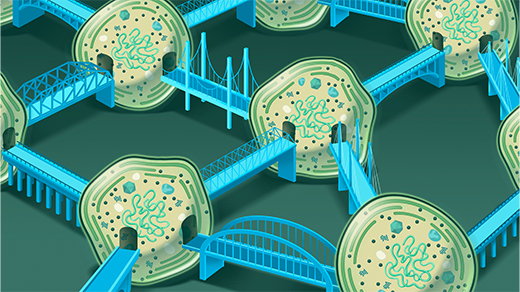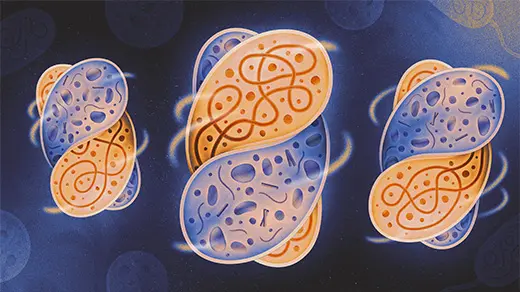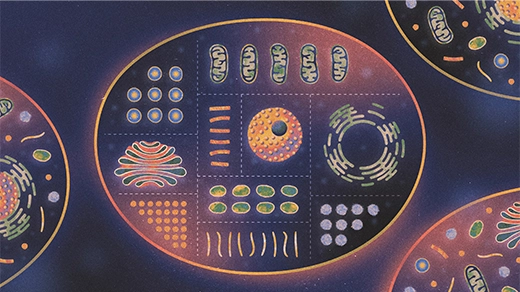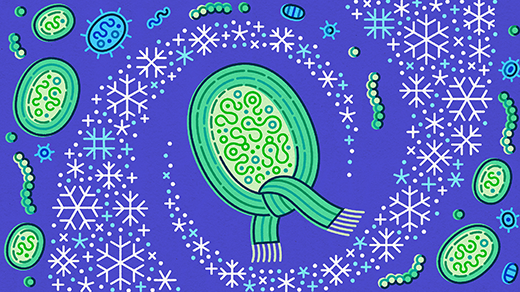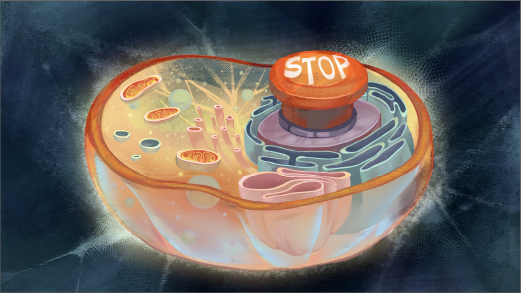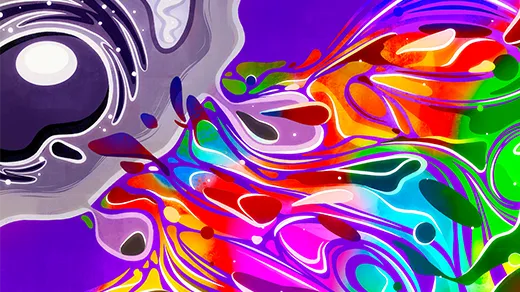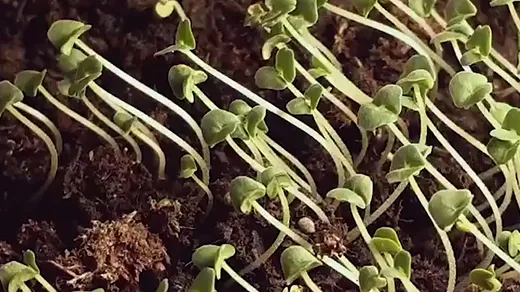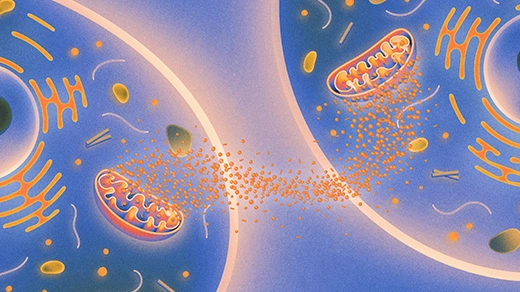What's up in
Cell biology
Latest Articles
The Ocean Teems With Networks of Interconnected Bacteria
Nanotube bridge networks grow between the most abundant photosynthetic bacteria in the oceans, suggesting that the world is far more interconnected than anyone realized.
Scientists Re-Create the Microbial Dance That Sparked Complex Life
Evolution was fueled by endosymbiosis, cellular alliances in which one microbe makes a permanent home inside another. For the first time, biologists made it happen in the lab.
Meet the Eukaryote, the First Cell to Get Organized
All modern multicellular life — all life that any of us regularly see — is made of cells with a knack for compartmentalization. Recent discoveries are revealing how the first eukaryote got its start.
Even a Single Bacterial Cell Can Sense the Seasons Changing
Though they live only a few hours before dividing, bacteria can anticipate the approach of cold weather and prepare for it. The discovery suggests that seasonal tracking is fundamental to life.
Most Life on Earth Is Dormant, After Pulling an ‘Emergency Brake’
Many microbes and cells are in deep sleep, waiting for the right moment to activate. Biologists discovered a widespread protein that abruptly shuts down a cell’s activity — and turns it back on just as fast.
How ‘Idle’ Egg Cells Defend Their DNA From Damage
How do immature egg cells maintain genetic quality for decades before they mature? Scientists find unusual safeguards in this quiescent cell that may inform research into fertility.
Cellular Self-Destruction May Be Ancient. But Why?
How did cells evolve a process to end their own lives? Recent research suggests that apoptosis, a form of programmed cell death, first arose billions of years ago in bacteria with a primitive sociality.
Plants Find Light Using Gaps Between Their Cells
A mutant seedling revealed how plant tissues scatter incoming light, allowing plants to sense its direction and move toward it.
Cells Across the Body Talk to Each Other About Aging
Biologists discovered that mitochondria in different tissues talk to each other to repair injured cells. When their signal fails, the biological clock starts winding down.
